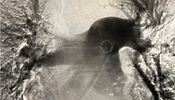BackTable / VI / Podcast / Episode #58
Endovascular Treatment of Pulmonary Embolism
with Dr. Venkat Tummala and Dr. Thomas Tu
Interventional Cardiologist Thomas Tu, MD and Interventional Radiologist Venkat Tummala MD discuss their respective approach to the treatment of Pulmonary Embolism, including risk stratification, treatment options, and endovascular technique.
This podcast is supported by:
Be part of the conversation. Put your sponsored messaging on this episode. Learn how.

BackTable, LLC (Producer). (2020, March 11). Ep. 58 – Endovascular Treatment of Pulmonary Embolism [Audio podcast]. Retrieved from https://www.backtable.com
Stay Up To Date
Follow:
Subscribe:
Sign Up:
Podcast Contributors
Dr. Venkat Tummala
Dr. Venkat Tummala is a practicing interventional radiologist with Lakeland Vascular Institute in Florida.
Dr. Thomas Tu
Dr. Thomas Tu is an interventional cardiologist and chief medical officer of Inari Medical. Until recently, Dr. Tu was the director of the cardiac cath lab at Louisville Cardiology in Kentucky.
Dr. Michael Barraza
Dr. Michael Barraza is a practicing interventional radiologist (and all around great guy) with Radiology Associates in Baton Rouge, LA.
Transcript Preview
[Dr. Thomas Tu]
The ideal placement of the Triever aspiration catheter is right at the proximal edge of the clot. I recommend that you start aspirating proximally first. That reduces the chance that you're going to push the clot further into the lungs and perhaps cause it to become occlusive and then, if you can aspirate right on the proximal edge, I think you'll have the best luck. If there's a long saddle, oftentimes because the saddle of the pulmonary arteries is quite a large structure and it might be hard to get close enough, that would be the one exception where I actually will try to pull the clot out from the distal end and pull it out backwards. And usually you can snare it around the area of the bifurcation of the truncus anterior and the intralobar artery on the right or around the intralobar artery basal trunk on the left. Those are common locations to grab the clot successfully.
Disclaimer: The Materials available on BackTable.com are for informational and educational purposes only and are not a substitute for the professional judgment of a healthcare professional in diagnosing and treating patients. The opinions expressed by participants of the BackTable Podcast belong solely to the participants, and do not necessarily reflect the views of BackTable.
















